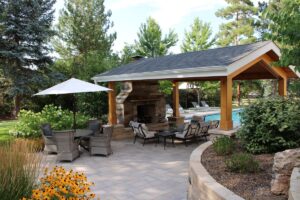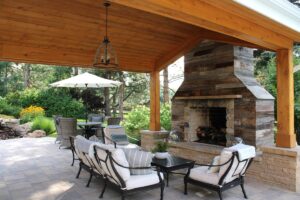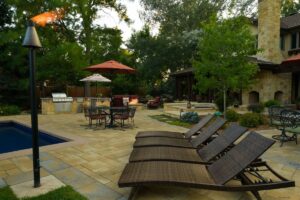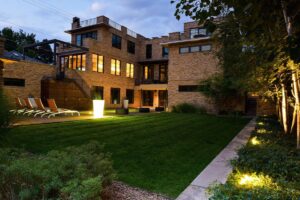Designing for Denver’s Microclimates: A Guide for Homeowners
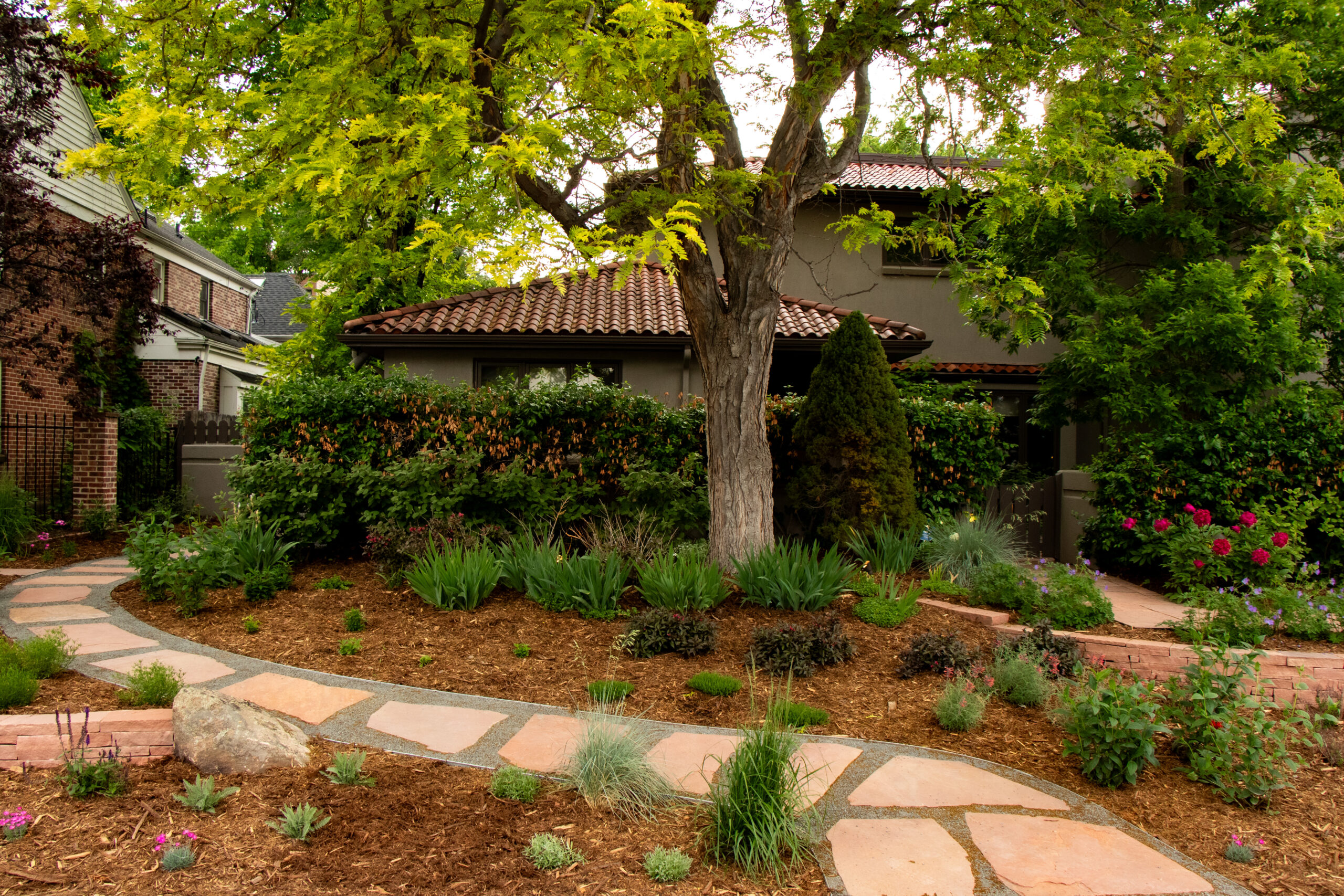
Picture this: You’re outside enjoying a sunny afternoon in your garden when—out of nowhere—a gust of wind sends a chill through the air. Within minutes, the weather takes a drastic turn. Denver’s climate is known for its unpredictability, making it one of the most challenging—and rewarding—places for landscaping. From the warm sun to sudden snowstorms, Denver’s diverse microclimates are part of what makes gardening here so unique.
Microclimates, or small localized areas where weather conditions vary from the surrounding area, play a significant role in how plants and design elements perform in any given outdoor space. As seasoned Denver landscape architects, Phase One Landscapes specializes in crafting outdoor spaces that are not only beautiful but also optimized. We understand that landscape design in Denver requires more than just aesthetic appeal—it needs to thrive amid the rapid temperature shifts, varying moisture levels, and mix of sun and shade.
Understanding Denver’s Microclimates
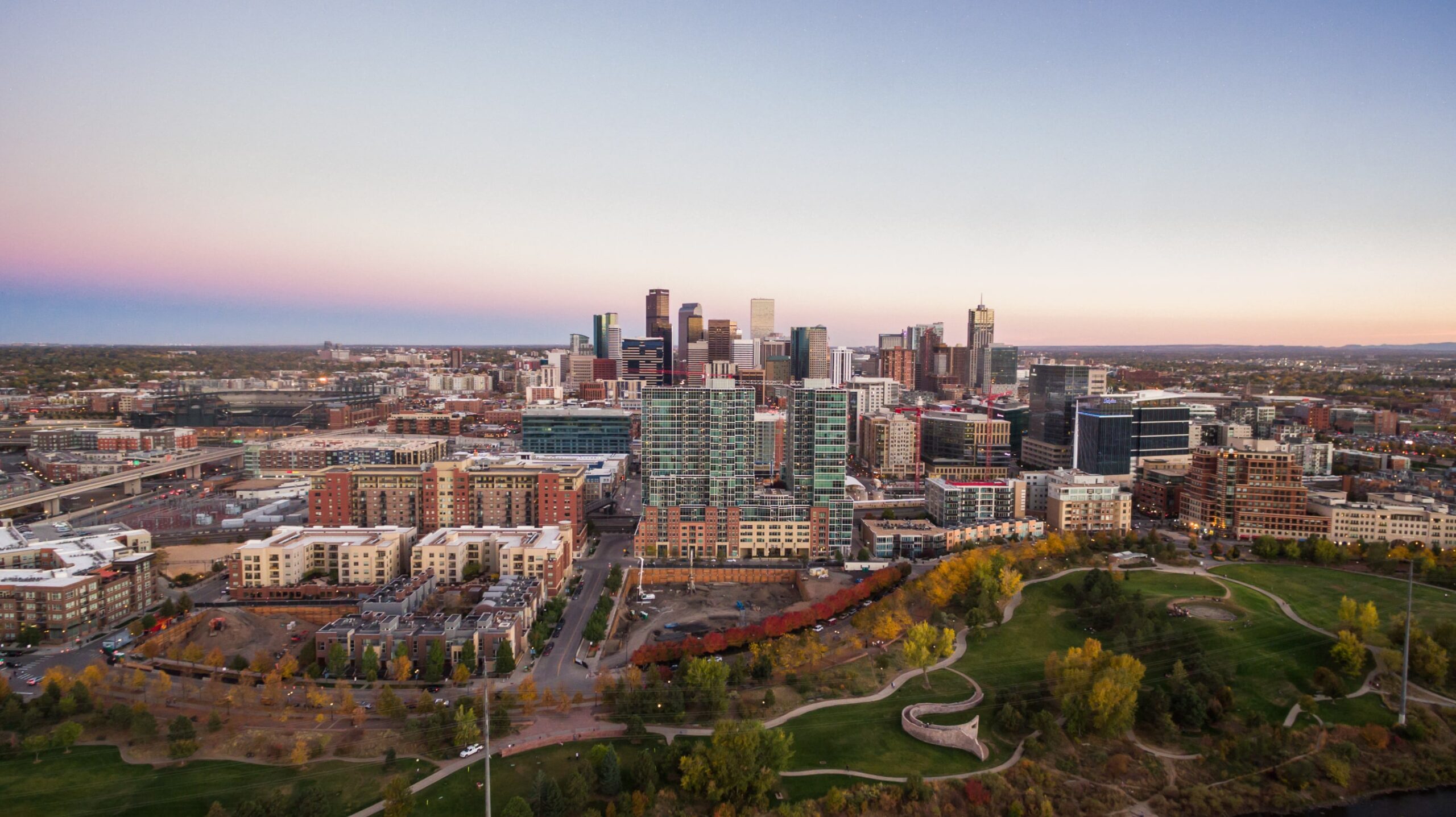
When it comes to understanding Denver’s microclimates, it’s important to look at the factors that influence them. First, there’s elevation. Denver’s high altitude means certain neighborhoods experience cooler temperatures at night and warmer temperatures during the day. This can create pockets of microclimates, where specific areas are more or less exposed to the sun, moisture, or wind.
Sun exposure is another key factor. A garden facing south and/or west will experience more sun and heat, while one on the north side will see less light and cooler temperatures. These variations in sun exposure will influence which plants thrive and how they grow. Proximity to water is another consideration. Areas closer to bodies of water, or those with irrigation systems, tend to have higher moisture levels, while drier regions may require more water conservation methods.
For example, areas like Cherry Creek and the Washington Park neighborhood might have distinct microclimates due to their proximity to buildings and trees, creating cooler, shaded spots that are ideal for certain plant species. In contrast, neighborhoods like Highlands Ranch or parts of Littleton, with their sprawling, open spaces and more direct sunlight, require more heat-tolerant plants. Understanding the specifics of each neighborhood is key in creating a space that performs well across seasons and weather fluctuations.
These variations in climate across Denver are an essential consideration for any landscaping project, from plant selection to hardscaping choices, and are what make Denver garden planning unique.
Plant Selection for Different Microclimates
Once you’ve identified the characteristics of your microclimate, the next step is selecting the right plants. For areas exposed to full sun, such as south-facing gardens, drought-tolerant and heat-resistant plants are crucial. Varieties like ornamental grasses, succulents, or certain lavender species thrive in these conditions. These plants need less water and can withstand the heat, making them ideal for low-maintenance spaces.
On the other hand, areas with more shade or cooler temperatures, like those found in parts of downtown or the north side of Denver, require plants that are tolerant of less sun and moisture fluctuations.Lady’s Mantle , Hostas, and Columbine—native to Colorado—are excellent choices for these areas. These plants not only thrive in the shade but also require less water and maintenance compared to sun-loving varieties.
For Denver’s high-altitude gardening, it’s essential to choose plants that can handle extreme temperature fluctuations. Daytime warmth can quickly shift to chilly nights, and plants need to be hardy enough to handle these swings. Native species like Mountain Mahogany, Three Leaf Sumac, Mahonia Repens and native grasses , which have adapted to Denver’s climate, are perfect for these areas.
At Phase One Landscapes, we understand that the key to a thriving garden is selecting the right plant for the right environment. By incorporating native plants and those adapted to Denver’s unique microclimates, we ensure your garden flourishes in harmony with its surroundings. Our approach ensures your outdoor space thrives regardless of sun exposure, moisture levels, or temperature fluctuations.
Design Considerations for Microclimates
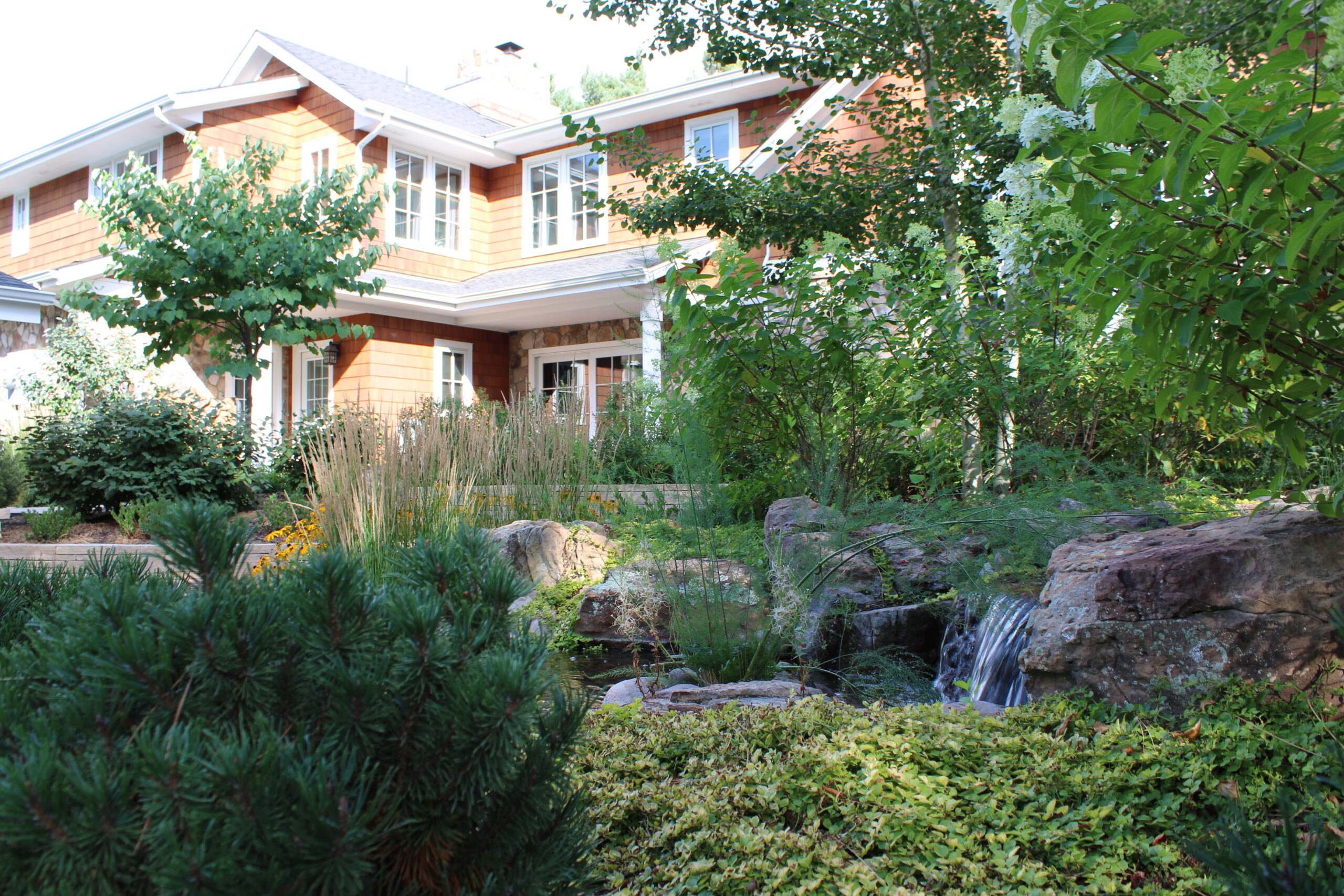
Designing a garden that works within Denver’s microclimates requires more than just choosing the right plants. It’s also about creating a cohesive, functional space that takes into account factors like wind exposure, moisture distribution, and temperature variation.
Hardscaping is often the unsung hero of microclimate management. Thoughtfully placed structures like retaining walls or windbreaks can provide much-needed protection for delicate plants. For example, a well-placed stone wall can shield more fragile flowers from harsh winds and offer a microclimate that is warmer and more protected, allowing them to thrive in otherwise difficult conditions. Similarly, incorporating water features or irrigation systems can help maintain moisture levels in drier areas, ensuring that your plants remain hydrated and healthy.
Design elements like patios, pergolas, or trellises can also help mitigate the effects of extreme weather. For example, a pergola can provide shade during the hottest part of the day, while also protecting plants that may need more filtered sunlight. Windbreaks made from dense shrubbery can shield your garden from Denver’s harsh winds, ensuring that plants like trees and shrubs receive the protection they need to flourish.
Incorporating irrigation zones that address the specific moisture needs of your garden is another effective way to cater to varying microclimates. These irrigation systems, for example, can be programmed to water areas that require more moisture, while drier zones may need little to no water.
Maintenance and Care in Various Microclimates
When it comes to maintaining your garden in Denver, flexibility is key. Different microclimates require different approaches to care, and knowing how to adjust your maintenance practices ensures that your garden remains healthy and beautiful throughout the year.
For sun-drenched areas, watering schedules may need to be more frequent to compensate for the higher evaporation rates. On the flip side, shaded areas may require less water, especially during the cooler months. Fertilizing schedules also differ based on exposure; plants in sunnier areas often need more nutrients to sustain growth.
Wind-prone gardens also require more frequent monitoring, as strong winds can dry out soil and damage delicate plants. Mulching can help retain moisture in these areas while protecting the root systems of more sensitive plants. Additionally, trimming back windbreaks or evergreen shrubs can help keep the space tidy and prevent the accumulation of debris that might otherwise block airflow.
Phase One Landscapes helps clients adapt their maintenance routines to the specific needs of their microclimates, ensuring that their outdoor spaces continue to thrive year-round, no matter the weather.
Your Outdoor Space, Tailored for Denver’s Elements
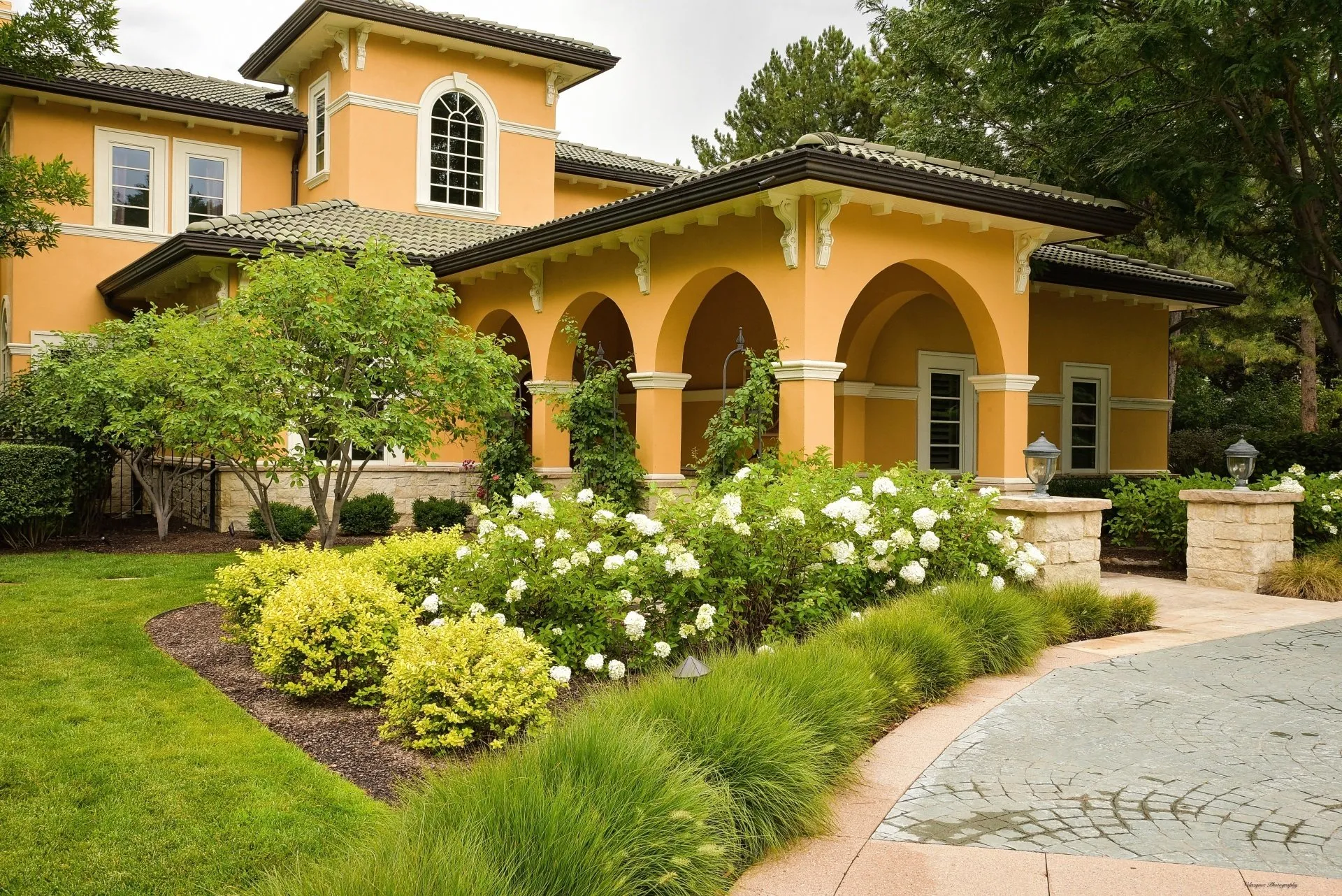
Designing a garden that thrives in Denver’s diverse microclimates is no simple task, but with the right expertise, it’s entirely possible. From selecting the perfect plants for varying sun exposure to creating hardscaping elements that protect against extreme weather, Phase One Landscapes’ team of Denver landscape architects brings the experience and knowledge necessary to create truly remarkable outdoor spaces.
By considering all the factors that make your garden unique—from temperature and moisture levels to sun exposure and wind patterns—you can build an outdoor living area that lasts for years to come. Ready to transform your outdoor space? Contact Phase One Landscapes today for a consultation, and let our experts guide you through every step of designing a landscape that thrives in Denver’s microclimates.



